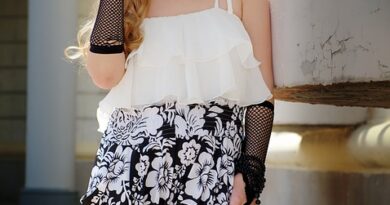The Evolution of Women’s Dress: From Corsets to Comfort
The Evolution of Women’s Dress: From Corsets to Comfort
Throughout history, women’s fashion has undergone many transformations, reflecting changes in societal norms, cultural trends, and women’s liberation movements. One noticeable aspect of this evolution is the shift from garments that imposed restrictions on women’s bodies, such as corsets, to more comfortable and practical clothing choices.
The corset, which reached the height of its popularity in the Victorian era, was a tight-fitting garment worn to shape and mold a woman’s body into the ideal hourglass figure. Women were expected to have a tiny waistline, so corsets were worn tightly laced to achieve the desired look. However, this fashion statement came at a great cost, as corsets often caused physical discomfort, restricted movement, and even health issues such as difficulty breathing and reduced blood circulation.
The early 20th century marked the beginning of a new era for women’s fashion. This period coincided with significant social and political changes, including the women’s suffrage movement and the fight for gender equality. Women began to challenge the status quo, questioning long-held beauty standards and the restrictive clothing that accompanied them.
The 1920s brought about a radical change in women’s fashion. The Flapper era made waves by introducing shorter hemlines, loose-fitting dresses, and dropped waists, representing a departure from the restrictive garments of the past. This newfound freedom allowed women to move more comfortably and liberate themselves from the constraints of corsets.
As the decades passed, women’s fashion continued to evolve towards comfort and practicality. In the 1940s and 1950s, World War II had a profound impact on fashion trends. With women taking on more active roles in society, clothing became more functional and utilitarian. Pants became a mainstream choice for women, allowing them to engage in physical activities previously reserved for men.
The 1960s and 1970s were characterized by the feminist movement, which sought to redefine traditional gender roles and challenge societal expectations of women. Notably, the women’s liberation movement broke barriers by embracing trousers, miniskirts, and unisex clothing. These styles symbolized the concept of gender equality and freedom of self-expression.
Fast forward to the modern era, comfort has become a significant consideration in women’s fashion. Activewear and athleisure have gained popularity as more and more women prioritize comfortable, functional, yet stylish clothing. Fashion designers focus on creating garments that allow freedom of movement without compromising on style.
Additionally, body positivity and inclusivity movements have influenced the evolution of women’s fashion. Plus-size fashion has become more widely available, celebrating diverse body shapes and sizes. As a result, women have more choices in clothing that both flatter their figures and offer comfort.
In conclusion, the evolution of women’s dress has seen a significant shift from corsets and restrictive clothing towards comfort and practicality. From the suffrage movement to modern-day body positivity movements, women have worked towards dismantling rigid beauty standards and embracing garments that allow for self-expression and freedom of movement. As fashion continues to adapt to changing societal norms and women’s needs, the future looks promising for women’s comfort, style, and confidence.









